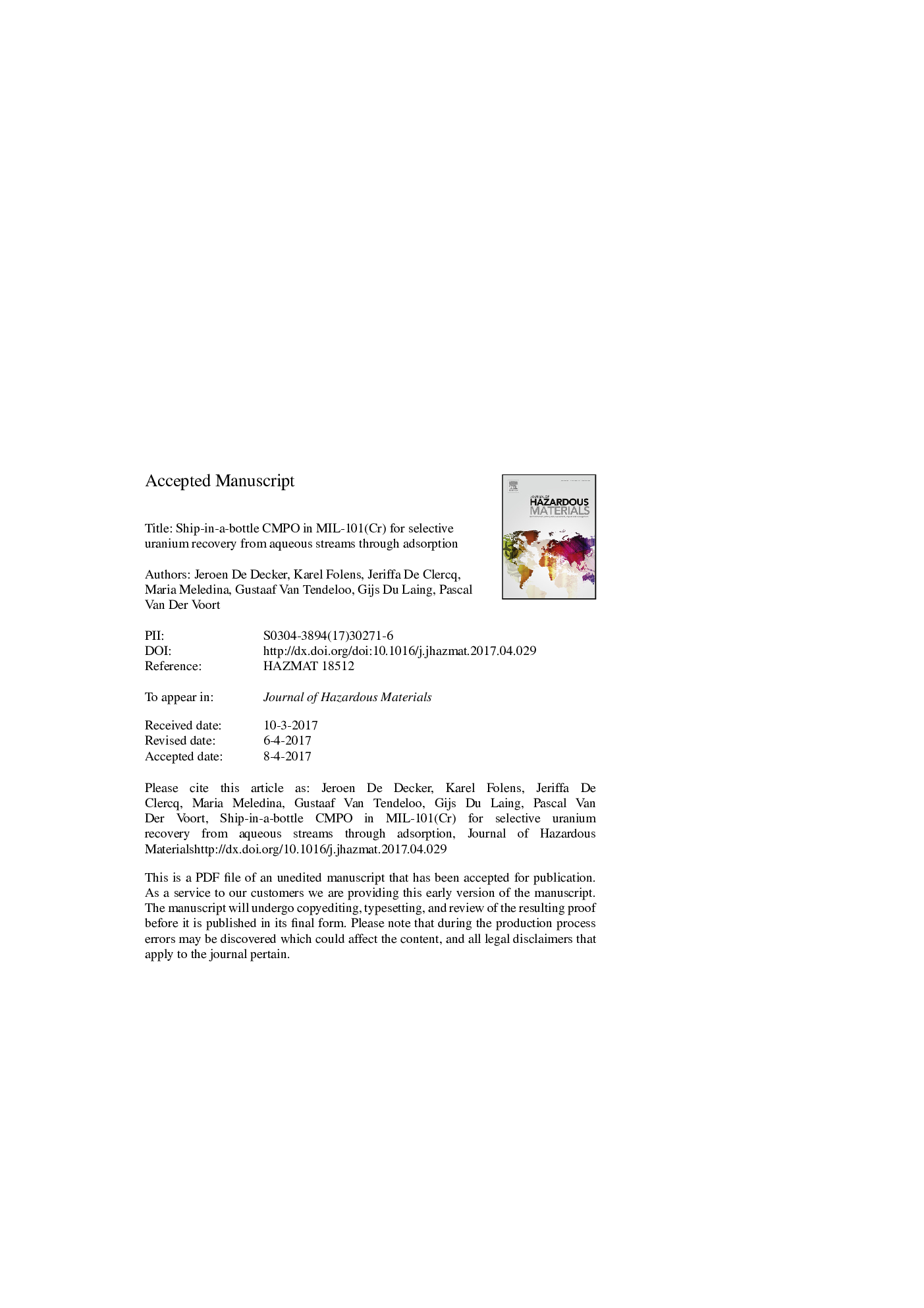| Article ID | Journal | Published Year | Pages | File Type |
|---|---|---|---|---|
| 4979467 | Journal of Hazardous Materials | 2017 | 16 Pages |
Abstract
Mesoporous MIL-101(Cr) is used as host for a ship-in-a-bottle type adsorbent for selective U(VI) recovery from aqueous environments. The acid-resistant cage-type MOF is built in-situ around N,N-Diisobutyl-2-(octylphenylphosphoryl)acetamide (CMPO), a sterically demanding ligand with high U(VI) affinity. This one-step procedure yields an adsorbent which is an ideal compromise between homogeneous and heterogeneous systems, where the ligand can act freely within the pores of MIL-101, without leaching, while the adsorbent is easy separable and reusable. The adsorbent was characterized by XRD, FTIR spectroscopy, nitrogen adsorption, XRF, ADF-STEM and EDX, to confirm and quantify the successful encapsulation of the CMPO in MIL-101, and the preservation of the host. Adsorption experiments with a central focus on U(VI) recovery were performed. Very high selectivity for U(VI) was observed, while competitive metal adsorption (rare earths, transition metals...) was almost negligible. The adsorption capacity was calculated at 5.32Â mg U/g (pH 3) and 27.99Â mg U/g (pH 4), by fitting equilibrium data to the Langmuir model. Adsorption kinetics correlated to the pseudo-second-order model, where more than 95% of maximum uptake is achieved within 375Â min. The adsorbed U(VI) is easily recovered by desorption in 0.1Â M HNO3. Three adsorption/desorption cycles were performed.
Related Topics
Physical Sciences and Engineering
Chemical Engineering
Chemical Health and Safety
Authors
Jeroen De Decker, Karel Folens, Jeriffa De Clercq, Maria Meledina, Gustaaf Van Tendeloo, Gijs Du Laing, Pascal Van Der Voort,
